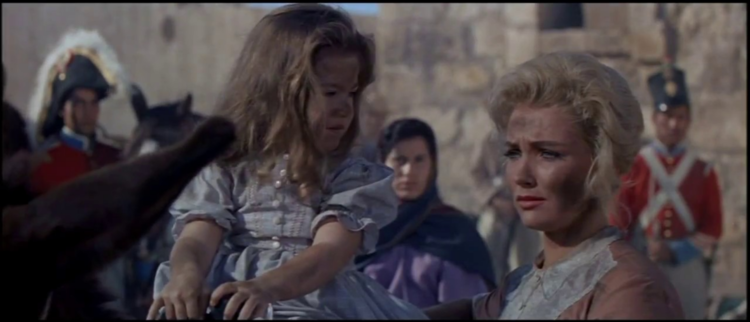


12/26/2021
Earlier by Steve Sailer: Joan Didion, RIP
Recently NRO published a remembrance of Joan Didion [Joan Didion: The National Review Years, December 23, 2021], who in the early 60s was a staffer at National Review. NRO included a link to archived National Review NOT Online pieces from the 60s, and this one of them: “Wayne at the Alamo,” NR, December 31, 1960, when Didion had just turned 26.
Just so you know, the part about the last white woman leaving the Alamo boldfaced by me below isn’t in the NRO excerpt.
There seemed to be no real reason other than John Wayne’s presence, why I should like The Alamo. This was no Western, no thing of perfect symmetry. no classic tale played out beneath the blazing still sun of American myth, reaching Its agon in the dust of a never-never Main Street. This was a message picture, as surely as Gentlemen’s Agreement, Pinky, Home of the Brave. Although I do not like to admit it, perhaps I simply approved the message, loved John Wayne for writing in the Hollywood Reporter that he wanted to "show this living generation of Americans what their country really stands for," adored him for saying that he got the money (it took twelve million dollars to get this particular message on the screen) "from great men like Clinton W. Murchison and O. J. and I. J. McCullough." Because if you do like The Alamo. and I did, you like it in the face of obstacles some would think steep. (So many thought those obstacles not only steep but insurmountable, in fact, that it became necessary for The Daughters of the Republic of Texas to announce that "it is entirely out of line for the New York papers to be so sarcastic.") When I saw The Alamo, it was running three hours and thirty-six minutes (Obstacle #1). which made seeing it only slightly less strenuous than defending it had been.
….
Wait. About forty-five minutes into The Alamo, a man appears on that immense Todd-AO horizon. He smiles. He moves his shoulders a little. He says "Les-go" or something like it; who cares what he says? He goes riding through the tall grass down to San Antonio, right off the top of the screen, and you are, if you are like me, lost, lost forever. It is John Wayne. It might be Clark Gable, appearing in a white linen suit amid the flaming ruin of Atlanta to carry Scarlett home to Tara; it might be the purr of an American plane — always distinguishable from Axis planes, which had engines that whined — coming in overhead just as the rations run out in a World War II movie. From then on, the ball game’s over.
At least it was for me. I wept as Wayne told his Mexican inamorata How A Man’s Gotta Live. I wept as he explained why Republic Is A Beautiful Word.
I wept throughout the siege of the mission; there was no use in my companion’s trying to amuse me by pointing out that it had just come home to Richard Widmark, although the problem had been under discussion on screen for some three hours, that "WE NEED MORE MEN.'"
I was inconsolable by the time the battle was done, and Wayne lay on the cold cold ground, bleeding as no one has bled since Janet Leigh in Psycho. The last white woman walked out of the Alamo then. She had soot on her face, and she was carrying her child, and she held her head high as she walked past Santa Anna into the sunset.
So conspicuous was my sniffling by then that you could scarcely hear the snickers from my neighbors, a couple of young men from Esquire, both of whom resembled Arthur M. Schlesinger Jr. They don’t make 'em like Duke on the New Frontier.